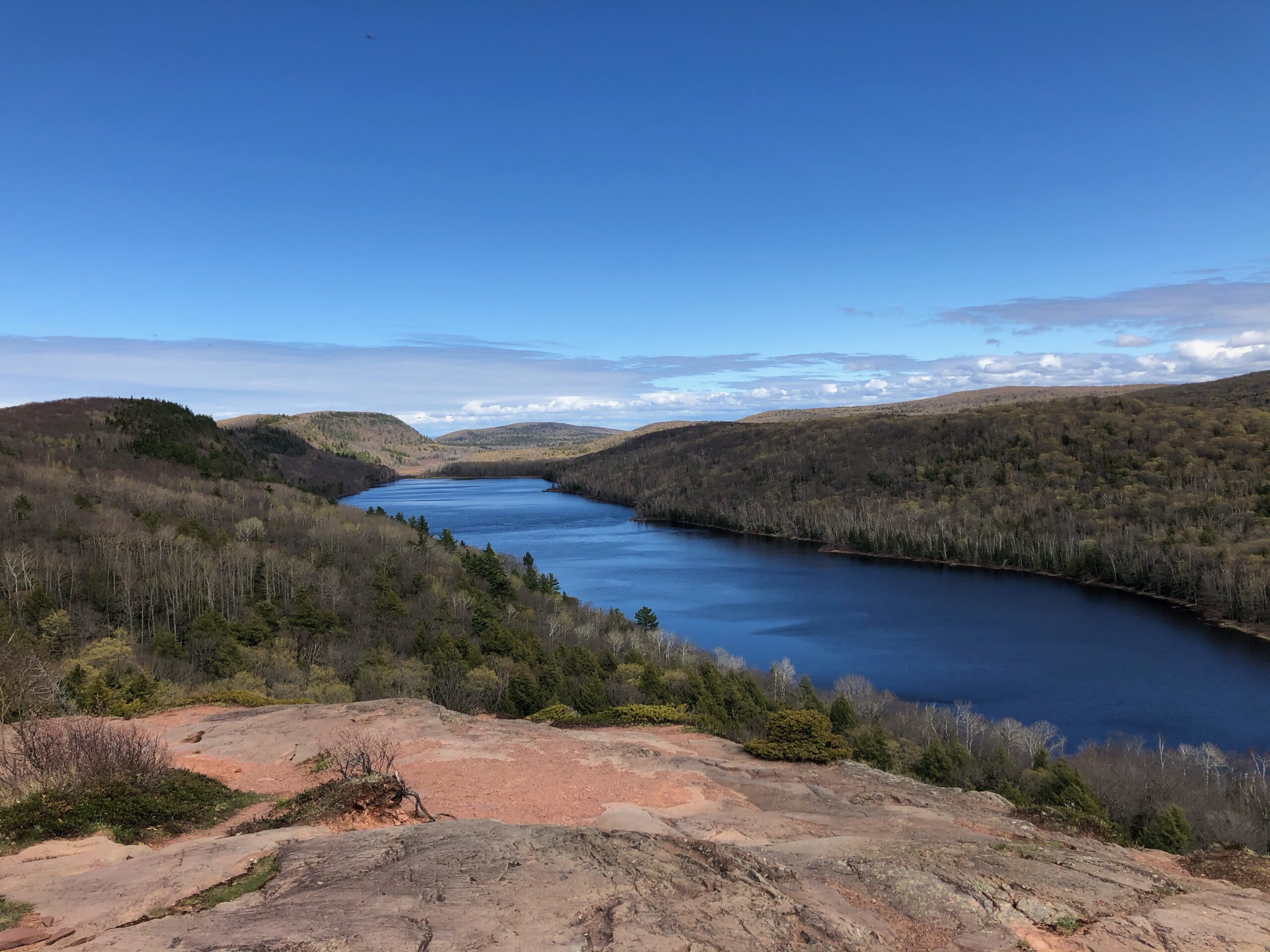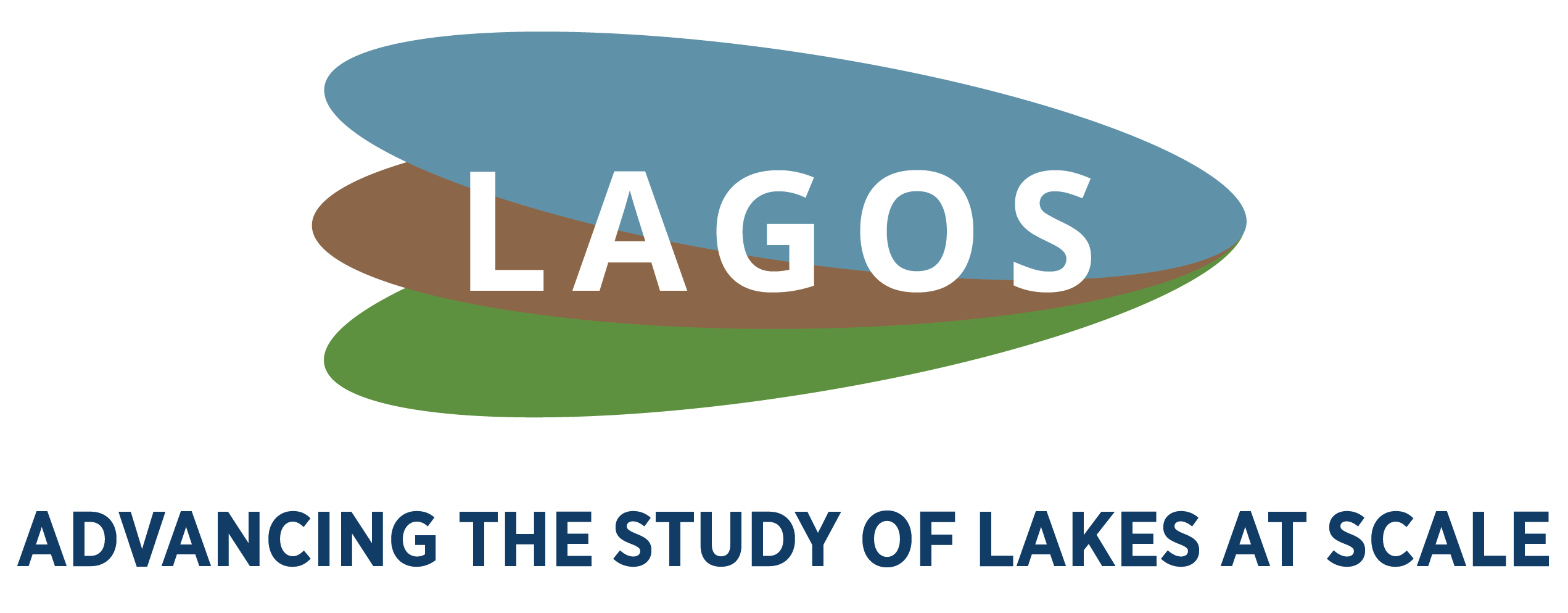
Frequently Asked Questions
How do I cite LAGOS?
It depends on how you are using LAGOS.
- If you are referring to LAGOS-NE in general (without using the data), then please cite the Soranno et al. 2017 GigaScience paper (https://doi.org/10.1093/gigascience/gix101) and
- If you are referring to LAGOS-US in general (without using the data), then please cite the Cheruvelil et al. 2021 Limnology and Oceanography Letters paper (https://doi.org/10.1002/lol2.10203).
- However, if you use data from either LAGOS-NE or LAGOS-US, then please cite the individual modules in the paper reference section that you are using with the data citation from the Environmental Data Initiative (EDI) repository. If there is also a data paper associated with the data module, you can also cite that, but if you are short on citations, it is most critical to cite the actual data product so that other researchers see exactly where the data come from. EDI has suggestions about the data citation format, for example a standard format.
- Format for citing the datasets: Names of creators. Year of publication. Name of the specific dataset. The version of the dataset. Name of the repository. Link to the dataset/DOI (access time).
- Example data citation: Smith, N.J., K.E. Webster, L.K. Rodriguez, K.S. Cheruvelil, and P.A. Soranno. 2021. LAGOS-US LOCUS v1.0: Data module of location, identifiers, and physical characteristics of lakes and their watersheds in the conterminous U.S. ver 1. Environmental Data Initiative. https://doi.org/10.6073/pasta/e5c2fb8d77467d3f03de4667ac2173ca (Accessed 2024-01-22).
What is a lagoslakeid?
The lagoslakeid is a unique identifier assigned to each lake in LAGOS. For most lakes, lagoslakeid in the LAGOS-NE database platform is the same in LAGOS-US, and an existing lagoslakeid is never reassigned to a new lake. However, because the lagoslakeid is based on the high resolution NHD data product that is frequently updated, there have been some changes to a few lake lagoslakeids between LAGOS-NE and LAGOS-US due to changes in how lakes are represented in the NHD. The lake_link.csv table provides a crosswalk between these two datasets for those cases where they differ, along with the lake identifiers from several other data products.
How do I find LAGOS data?
We provide lots of helpful information on this website and all LAGOS data are publicly available from the data repository Environmental Data Initiative (EDI) at: https://portal.edirepository.org/nis/simpleSearch?defType=edismax&q=title:LAGOS&fl=id,packageid,title,author,organization,pubdate,coordinates&debug=false
Are all of the data in LAGOS-NE also in LAGOS-US?
These two research platforms are separate, although there are SOME overlaps. We explain the key areas to be aware of:
- For LOCUS and GEO modules:
- LAGOS-US contains LAGOS-NE lakes and the methods have been improved in the LAGOS-US research platform, so we recommend using the LAGOS-US GEO and LOCUS modules when using LAGOS-NE LIMNO. The watershed delineations in particular have been greatly improved for LAGOS-US.
- Further, because LAGOS-US LOCUS is based on the most recent NHD dataset, it is recommended that even if users use the LAGOS-NE LIMNO data module, users use the LAGOS-US LOCUS module.
- For LIMNO modules, the data sources are entirely different between the two platforms. At the time that LAGOS-NE LIMNO was being built (~2011-2015), there were not that many datasets that had been loaded into the Water Quality Portal (WQP), therefore, a more manual approach was used. Whereas, by the time LAGOS-US LIMNO was being built (around 2020-2023), far more WQP were available, and longterm, it made more sense to invest time in developing methods to download and harmonize data from WQP for future updates to LAGOS-US LIMNO. Note that for the variables that are in both LAGOS-NE LIMNO and LAGOS-US LIMNO, there are likely data in LAGOS-NE that are not in LAGOS-US since the WQP does not include all community-science datasets, university program datasets, and other types of programs. In particular:
- For LAGOS-NE, the LAGOS team sought databases from individual state, federal, tribal, and community-science organizations as well as non-profit organizations and university research programs. The team sought datasets that were either spatially extensive (entire states or regions) or temporally extensive (long-term datasets). The data ranges for in situ data range from the 1970’s until about 2012 however. In addition, due to the manual nature of harmonizing these datasets, the team focused on a small subset of water quality variables.
- For LAGOS-US, the LAGOS team downloaded data from all lakes in the study area from WQP. In addition, the team included 2 datasets that included either longterm data (lakes from the National Ecological Observatory Network), or national-scale data (the EPA National Lakes Assessment lake program).
- For any extension module: There are more extension modules for LAGOS-US. These modules can be used directly with the LAGOS-NE LIMNO data module.
Will LAGOS data be updated in the future?
The LAGOS team does not currently have funding to support the updating of data in the LAGOS platforms, and data with existing DOIs will remain as is. However, LAGOS is designed to be a community resource in which anyone can add to it by creating new extension modules, or by updating existing modules with new data (and then placing the new data in a new data repository that can be cited on its own). Future developers are encouraged then to use the LAGOS methods, terminology, and database design to allow others to use the updated data with the existing LAGOS products. These efforts are made possible by the extensive documentation available for all LAGOS products that contain detailed methods, code, and other resources.
How do I relate LAGOS data to other relevant data sources?
LAGOS-US LOCUS has a cross-walk table (lake_link.csv) that includes identifiers for many other data products (e.g., NEON, NHD, EPA), GNIS names, and Water Quality Portal monitoring location identifiers. Further, the ‘gis_locus’ geodatabase and geopackage contain lake and watershed shapefiles as well as lakes as spatial points which can be used to merge LAGOS with other data geospatially.
Who should I contact if I would like to submit a grant proposal that would leverage LAGOS?
Kendra Cheruvelil (ksc@msu.edu) or Pat Soranno (soranno@msu.edu). We would very much like to hear of users interested in using the LAGOS research platform, and are happy to serve as a resource for questions about the best way to leverage LAGOS. However, per open science principles, it is not essential that we be included as co-authors or collaborators. We certainly would be open to such collaborations, but we also want to encourage community use of what we hope is a valuable research platform for lake research.
Are the data in LAGOS LIMNO one-time only sampling or long-term?
Both. The number of samples per lake varies based on the lake variable of interest and the lake.
Can I use LAGOS to support my area’s decision-making (e.g., county, state)? How about in my class as a data source for student research?
Yes. We have had multiple institutions and instructors contact us for support in using LAGOS in these ways and we look forward to hearing more examples of such use of LAGOS, especially since these types of uses were a major motivating factor in the development of the LAGOS research platforms.
What kinds of waterbodies are NOT included in LAGOS?
LAGOS only contains perennial lakes > 1 ha (LAGOS-US) or > 4 ha (LAGOS-NE) surface area. Although reservoirs are included, a number of highly artificial waterbodies such as sewage treatment and aquaculture ponds were excluded based on NHD labels. Users should refer to the LAGOS-US LOCUS User Guide for additional information and considerations on data availability and observation flags for lake and lake watersheds that extend beyond US borders.
What sorts of QA/QC has been conducted for LAGOS? What additional QA/QC would I want to do before using the data?
It depends on the module. We have carefully documented our QAQC procedures for every module in its own User Guide because we used different approaches tailored to the data types. Users are expected to review the documentation and decide what further QAQC procedures are needed for their specific applications.
